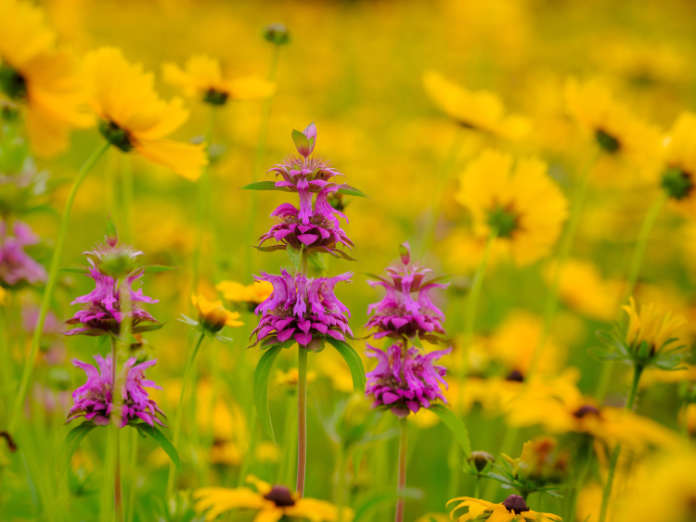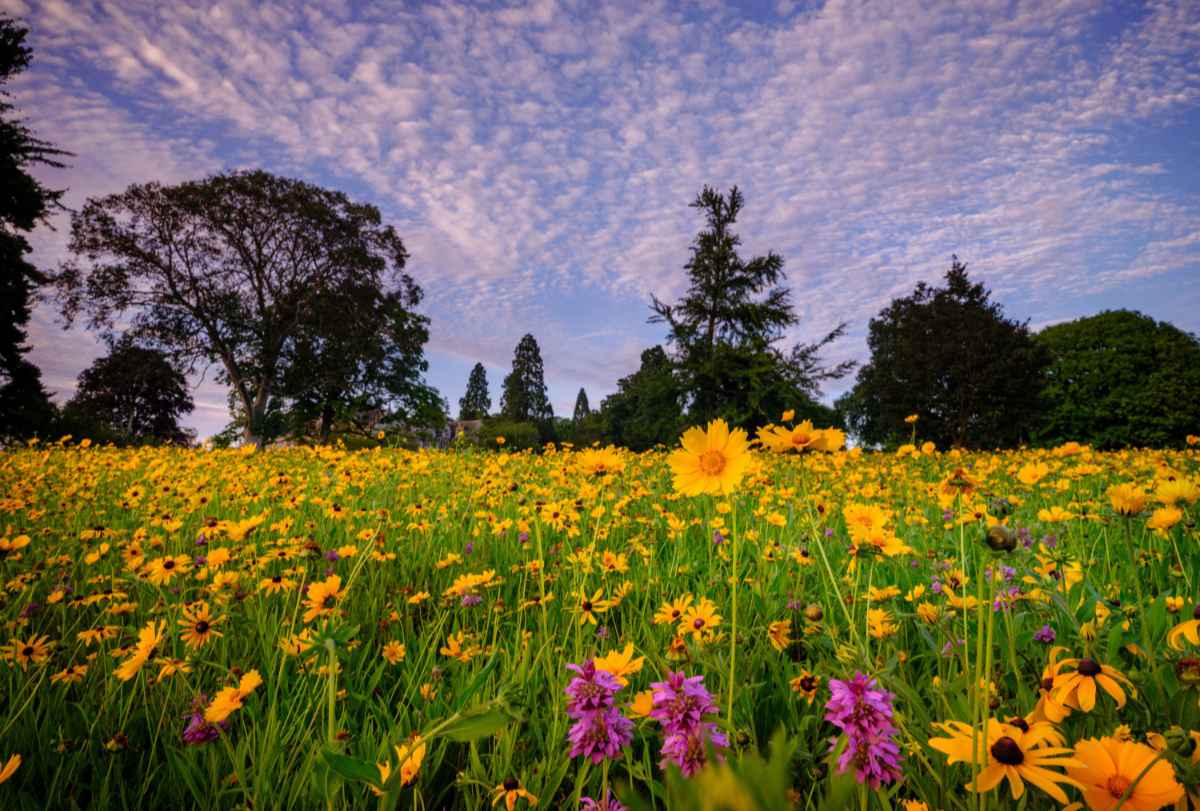Do you like the idea of rewilding, but without a swathe of overgrown nettles and brambles taking over? Prairie plants may be the way to go.
You may not have the vast landscape of the prairies of North America, but you can create a mini-prairie even in the smallest area, says Ed Ikin, deputy director and head of landscape, horticulture and research at Wakehurst, RBG Kew’s wild botanic garden in Sussex.
View this post on Instagram
Ikin has pioneered a project in which 12 million seeds have already been sown, and more than 50,000 plants are to be hand-planted in September into Wakehurst’s new six-acre American Prairie – and you could replicate at least a tiny part of that in your own garden.
Here, Ikin explains how…
What is a prairie?
View this post on Instagram
It’s a grassland, composed of multiple layers, from grasses at the bottom layer covering the ground, to flowers which might come through those grasses, some which form rosettes with a wide spread to occupy space where weeds would grow, others which produce tall flowers, he explains.
Is there an ideal soil?
Light or medium soil is good. You may have to add some sand or crushed rock if you have a heavier soil, or select plants which are suited to your soil, Ikin suggests.
“The ground needs to be just cultivated enough, but the less you cultivate it, the better. Ideally you just work with the conditions you have, planting in full sun if you can. Prairies tend to be open plains.”
What prairie plants should you go for?
View this post on Instagram
Clump-forming grasses such as the little blue stem (Schizachyrium scoparium) are ideal.
“If you have sandy soil, you might go for a coastal plant community. Suitable plants would include the butterfly weed (Asclepias tuberosa), which has the most gorgeous bright orange flowers and is used to growing en masse and is a fantastic nectar source, and Zizia, a member of the daisy family.
“If you have a medium soil you might go for monarda (bergamot). We have Monarda citriodora and punctata, which are robust. Rudbeckia hirta has the classic dark centre and golden petals, and we also have coreopsis, mountain mint and Penstemon digitalis.
View this post on Instagram
“You can also throw the coneflower (echinacea) into the mix. As a general rule, Echinacea pallida or laevigata are happiest in prairie systems, and will go right through the prairie mix. Baptisia (false indigo) should also do well.”
Praire seeds or plug plants?
“A lot of our prairie plants have been sown directly into the ground. If you do that, you get really tough plants where only the strong will survive. I recommend people experiment with direct sowing. Mix your grass seeds with flowering plant seeds such as rudbeckia, which is brilliant at colonising quickly.”
When should you sow?

“Sow in late summer and in September – it’s good to get a little germination before the end of the season. If you’ve a lot of pigeons, cover the seeds with horticultural fleece. Sow the grass at the same time as you sow the flowers. You may mix them with a little silver sand, which not only allows the seed to go further but enables you to see where you’ve sown.”
He says you should get some germination in autumn, but mainly in the following spring, and you shouldn’t have to do anything to it over the cooler months. Be patient!
How should your finished mini-prairie look?
View this post on Instagram
“It will change over seasons. Bear in mind that the young prairie will look different to the mature prairie,” says Ikin. “When it’s young, the rudbeckias will seem dominant, but it will be visually complex with lots of shapes and colours. You tend to have gold dominating, but the key is to keep adding plants into your prairie so over time those early pioneers will fade away, while those you choose to add over time, like echinaceas, baptisias and liatris, will change the colour palette and you’ll also get more texture from the grasses.”
How do you maintain it?
It may seem harsh, but Ikin says after the mini-prairie has been established for several years, set your mower to its highest setting during summer and mow the whole area. That way, the base grasses will root more strongly and you’ll eliminate annual weeds, and keep sunlight coming into the soil.
“You will have created a plant community that can take the stress of being mown and you need to collect the clippings. You will be mowing flowers too. It’s a little counter-intuitive but you have to consider whether you want to create an area which is really stable in the long-term,” he says.
Once the base layer is established, you may want to replenish the mini-prairie with colourful perennial plug plants.
Can you create a prairie in a pot?
View this post on Instagram
“Yes, but consider the physical shape and plants which complement each other. Do you want something tall, or that’s going to grow sideways or form a clump? Or you might want to pick three things that grow together in the wild and look particularly beautiful in a design setting,” says Ikin.
“In our prairie, the tallest plant will be the deer grass, which can grow up to 3m, but you might want to consider a cultivated more compact version. Then you might find an echinacea or penstemon which would be happy in a pot, coupled with a clump-forming grass.”
For more information, visit kew.org/wakehurst/whats-at-wakehurst/american-prairie
Best-selling wildflower seeds
Stuck for inspiration? Check out our list of best-selling Amazon products!
- Sow at 1-2g per square metre
- Over 25 Species of Flower
- Floral Mix
- WILDFLOWER SEED SHAKER TWIN PACK: 2 x 50 square meter shaker boxes each contain 20g of seeds and 500g of bran carrier (sowing medium) per box for a perfect spread of your seeds.
- BEE & BUTTERFLY WILDFLOWER SEEDS: Each pack contains a wild flower seed mix and sowing medium to help butterfly and bees in your garden
- WHEN TO SOW: Sow mid-March to June or September to November. Flowers in summer from a spring sowing, or the following spring from an autumn sowing
- Non-GMO, open-pollinated wildflower seeds for a beautiful and natural garden or landscaping project
- Easy-to-follow planting instructions for novice and experienced gardeners alike
- A variety of colorful and fragrant annual and perennial wildflowers, great sourse of foods for animal, bees, butterfly ... to bring life to our wildlife and nutuer
- Sow at 1-2g per square metre
- Over 25 Species of Flower
- Floral Mix
- Genuine Certified Seeds
- Mix 777
- Mix of Annuals & Perennials
Last update on 2024-04-12 / Affiliate links / Images from Amazon Product Advertising API



































































